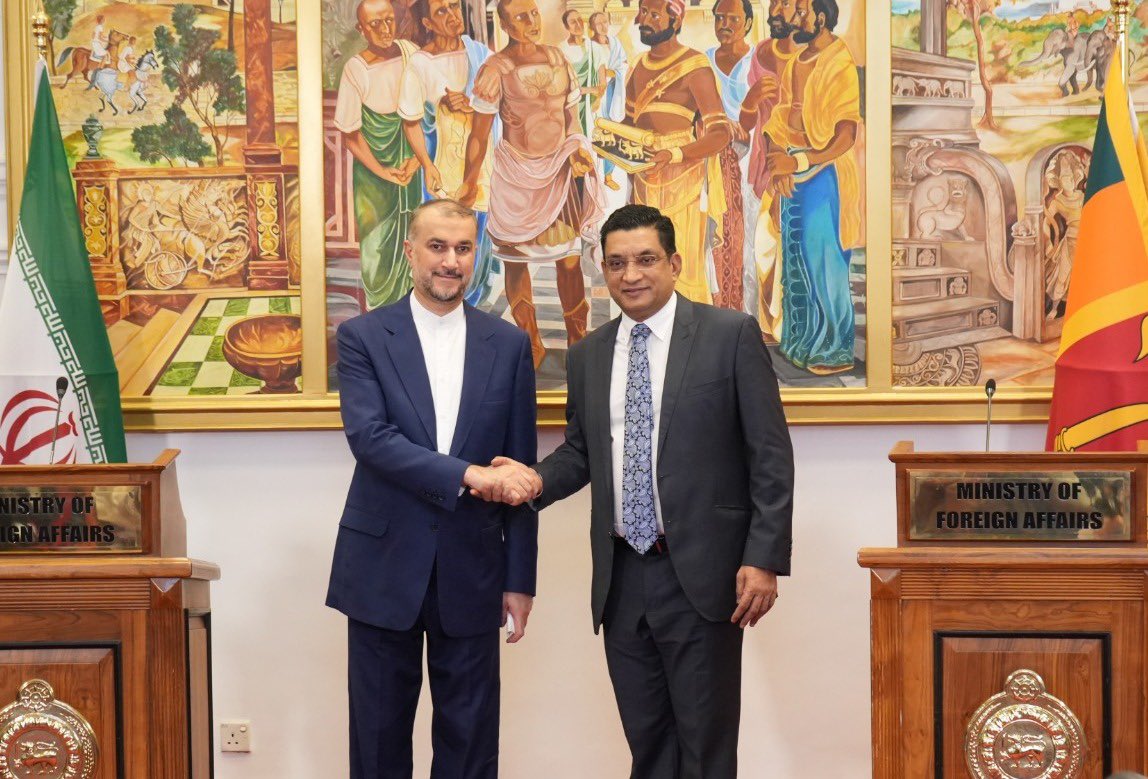Colombo turning to Iranian oil (circumventing US sanctions)
Centred on oil, the visit by Iranian Foreign Minister Hossein Amir Abdollahian from 19 to 21 February anticipates that of Iranian President Ebrahim Raisi at the end of the year. The minister and his Sri Lankan hosts also discussed nanotechnology, biotechnology, and pharmaceuticals, as well as the two countries’ “tea for oil” barter deal.
Colombo (AsiaNews) – Despite US sanctions, Sri Lanka and Iran are exploring possible ways of expanding oil trade between the two countries.
This is not an easy task, given the "toughest sanctions ever" imposed by former US President Donald Trump, a Republican, and kept substantially unchanged, if not increased, by current US President Joe Biden, a Democrat, whose term in office is near its end.
At the centre of the controversy is Iran’s nuclear programme, which was restricted in 2015 under the Joint Comprehensive Plan of Action (JCPOA), which President Trump scrapped three years later.
This and other issues related to bilateral relations were the focus of Iranian Foreign Minister Hossein Amir Abdollahian's visit to Sri Lanka from 19 to 21 February, whose main aim was boosting diplomatic relations as well as finding ways to get around the sanctions and give new impetus to trade, both in petroleum products and consumer goods.
Currently, Sri Lanka is paying US$ 250 million for crude oil imports in a “tea for oil” deal. So far, some US$ 20 million worth tea has been exported to Iran under the barter trade agreement.
The Foreign Minister’s visit was also meant to prepare the ground for that of Iranian President Ebrahim Raisi, expected to take place by the end of this year.
Before the 2012 US sanctions, Sri Lanka’s only oil refinery, which was built by Iran in 1969, depended primarily on Iranian crude. In 2021, the plant was temporarily shut down for lack of crude oil, which Sri Lanka could no longer buy.
Government sources in Colombo note that during the visit by Iran’s top diplomat, discussions focused on expanding oil trade. Currently, some oil transactions are taking place through third parties.
The two sides also agreed to explore ways to expand them further and do so directly, despite US sanctions. Last year’s 0 million “tea for oil” deal is part of this.
“According to data from companies that track oil flows, Iran's crude oil exports have been surging in recent months on the back of higher shipments to countries such as China,” energy market analysts Shirantha Gamage and Ramesh Caldera told AsiaNews.
Analysts firms such as Vortexa, TankerTrackers and Kpler estimate an increase in Iran’s crude and condensate exports over the past three months, averaging about one million barrels per day.
Although the numbers are much lower than the more than 2.5 million barrels per day that the Persian Gulf nation exported in early 2018, they are much higher than the drop recorded "in 2020 when the figure stood at less than 500,000 barrels per day".
“We speculate that Washington is not enforcing the restrictions strictly in order to keep global crude prices in check. Sometimes, the Americans may be turning a blind eye as they are happy to have more barrels in the market to displace Russian oil,” Shirantha and Ramesh said.
During his meeting with Prime Minister Dinesh Gunawardena, Iran's foreign minister noted that his government was keen on cooperating with Sri Lanka in future projects that use Iranian expertise in the fields of energy, nanotechnology, biotechnology, water, agriculture, and pharmaceuticals.
“Iran has also agreed to provide another 31 million euro grant for the rural electrification project,” the Prime Minister’s office said in a statement. Senior Foreign Ministry officials report that "there is immense potential for further collaboration in different fields."
Talks covered key areas of mutual interest, including the political, economic and cultural cooperation, which "reflects very strong bilateral relations."
Iran has provided assistance to the island nation for the Uma Oya hydroelectric project, which will add an additional 120 megawatts of power to the country's power grid. The project, in addition to generating electricity, also provides 145 million cubic metres of water to irrigate 50,000 acres of dry land.
(Photo taken from the Ministry of Foreign Affairs of Sri Lanka)







.png)










